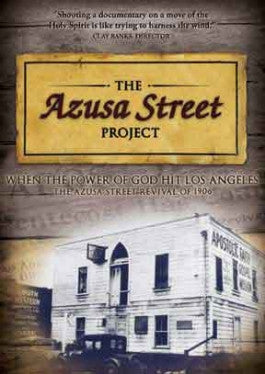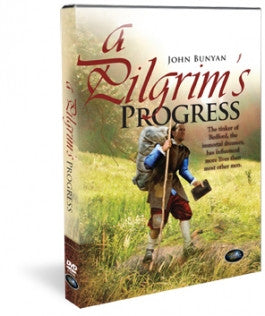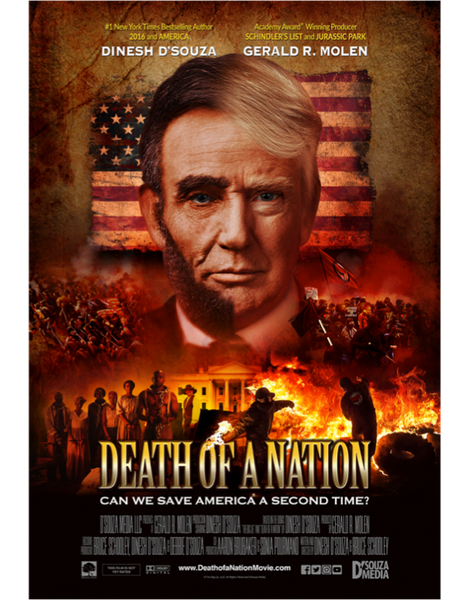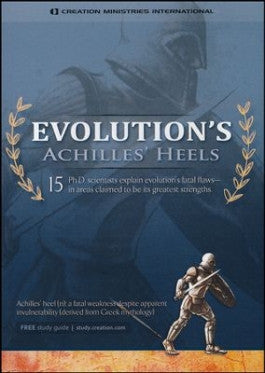
The Azusa Street Project DVD
Watch TrailerAdditional Information
- Languages: English
- Run Time: 54 minutes
- Screen Format: FS
- Subtitles: English
Sale price
$6.67
Regular price
$19.99
You save 67%
Estimated arrival between and for USA.

You might also like
The Azusa Street Project
Los Angeles, 1906. A one eyed preacher, son of a former slave, had traveled hundreds of miles by train from Huston. Finally arriving at the church which had called for him, the preacher, by the name of William J. Seymour, found the doors locked in his face. Confused the man started to pray, and in the ensuing months would start a revival that would effect millions of people.
The documentary The Azusa Street Project examines the history, mystery, and controversy surrounding the Azusa Street Revival and the founding of the Pentecostal-Charismatic movement. Explore topics such as salvation, the Holy Spirit, and speaking in tongues. Listen to prominent leaders and historians such as Bishop Charles E. Blake Senior, Dr. Jack Hayford, Joyce Meyer, Dr. Jim Reeve and many more as they discuss the founding and doctrine of a religious movement that changed the world.
William J. Seymour
Central to the story of the Azusa Street revival, and also to the documentary The Azusa Street Project is one man by the name of William J. Seymour. Born in 1870 to two former slaves, William's early life in Louisiana was far from easy. The racial tension following the Civil War was high in the South, and Louisiana had one of the highest rates of lynching in the entire country. Despite poverty and racial issues, William's childhood was full of love and religion. In the 1890s William J. Seymour left the South, hoping to escape the extreme racial prejudice and danger. He took with him two things, however--his religion and a desire for racial equality, which would be key to the revival portrayed in The Azusa Street Project. As he traveled throughout the North, his beliefs and convictions were strengthened by the people he met and experiences he had. During his time at a Bible school in Cincinnati William ended up getting smallpox and even went blind in one of his eyes. Despite his loss of sight, William would continue at the school until he was ordained as a preacher in 1901. In 1906 William continued his education at a Bible school in Huston, where his beliefs on the Holy Spirit and speaking in tongues were first formed. After only a few weeks in Huston William was asked by a fellow pastor to travel to Los Angeles and speak in a church there. This is where the story of The Azusa Street Project picks up.
The Azusa Street Revival
William arrived in Los Angeles in mid February and began speaking at a church there. After only a few days he was thrown and locked out after the church authorities became enraged over his belief of speaking in tongues. With little money and nowhere to go William J. Seymour stayed at a friend's house where he began a prayer group. After laying hands on his friend (Edward Lee), Lee began to speak in tongues and the revival had begun. The mission quickly grew too large for Lee's house and moved to the old building of the African Methodist Episcopal church, thereupon giving the revival a name. From its beginning, the Azusa Street revival spanned racial divides, and individuals from various races were soon worshiping together. The Azusa Street Revival would last from 1906 until 1909 and William J. Seymour's beliefs would spread like wildfire throughout the church. The revival, however, also spawned great controversy, which is explored int he film The Azusa Street Project.
The Legacy
The legacy of the Azusa Street revival is extremely interesting and is explored in great detail in The Azusa Street Project film. The revival rapidly spread across the United States, and racially integrated services could be found across the nation. The concept of racial unity in religion was very attractive to many individuals, especially those continuing to suffer from the extreme racial prejudice that followed the American Civil War, and for individuals across the globe suffering the effects of Colonialism. The mission of the Azusa Street revival spread across the globe as missionaries began traveling and spreading the beliefs central to the revival. Many modern denominations and millions of individuals can today trace their spiritual beginnings to the Azusa Street revival that William J. Seymour began.
Conclusion
The Azusa Street Project connects the history of the Azusa Street revival with the legacy it left behind. In addition, viewers will come to better understand the doctrine and beliefs core to the Azusa Street revival and the doctrines that sprang from it. Interviews with church leaders and historians, as well as photographs and historical documents make The Azusa Street Project a rich documentary full of lessons to be learned. This is the perfect film for those studying American history, church history, or religion in America, although you do not need to be studying a related topic to enjoy and learn from this film. The Azusa Street Project can be viewed as an individual, in a small group, or even a classroom setting! For individuals who attend a church that began from the Azusa Street revival, the film The Azusa Street Project will be especially fascinating, but other viewers will also find the story of William J. Seymour and the revival he started quite interesting. William J. Seymour and the Azusa Street revival changed the lives of millions of individuals across the globe. In addition, his desire for racially equal religious settings would influence the Civil Rights movement of the 1950s and 1960s. The Azusa Street Project is more than just a film on a revival's theology, it is a glimpse into a piece of history.
The Azusa Street Project has not been rated by the Motion Picture Association of America, and may include topics and issues not suitable for younger viewers. This film did, however, receive the "Faith Friendly" award for all ages from the Dove Foundation. As always, it is recommended that parents preview all content to determine what is suitable for their children, but the film The Azusa Street Project is considered appropriate for most audiences.
The Azusa Street Project DVD also includes:
-Scene selection
-Director's comments
-Tour of Bonnie Brae house
-Soundtrack
-Art Gallery
-Missionary Stories











